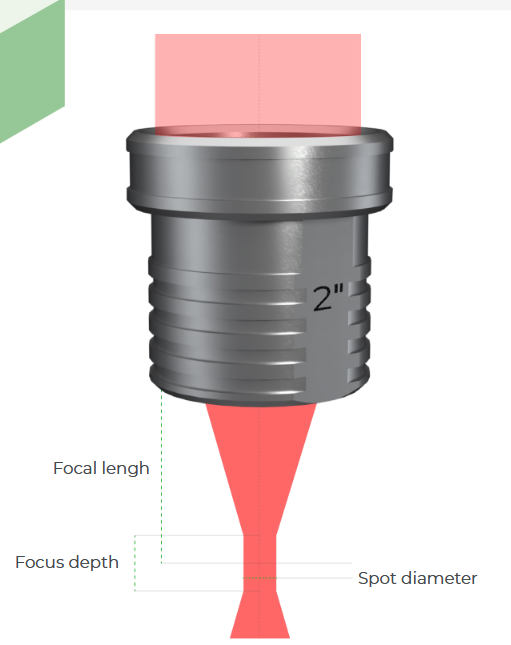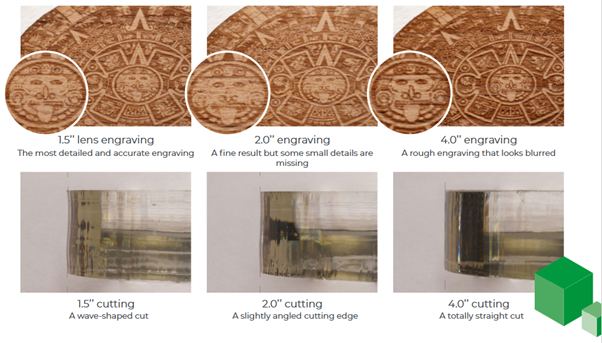Changing laser lenses enables you to shape your engraver’s laser beam according to certain properties. This makes it easy to improve engraving or cutting quality, or even productivity.
With this guide, discover the effects of your lens on your laser beam, and determine which lens is the best answer to your application.
What is a laser lens?
The laser lens is the optical element of your machine that focuses the laser
beam. The laser beam is between 8 and 10 mm in diameter before the lens. The
lens concentrates the beam at a thin point for greater precision and more
concentrated power. This point is called the focal point.

Choosing a focal length defines the diameter of the laser spot and therefore
the width of the engraving line. The focal length also defines the focus
depth, the distance over which the beam is considered to be focused. The depth
of field is used to define the acceptable difference in flatness on a part for uniform
engraving

Lens 1.5’’
Precision and sharpness
Perfect for: precision engraving, detailed ink stamps, precision
cutting on thin materials, high-resolution photos and logotypes
(> 800DPI)
Not suitable for: cutting thick materials (> 3 mm) and large
engraving areas
Lens 2.0’’
Multi-purpose
Perfect for: engraving and cutting of 2-ply plastics, engraving of letters (> 1 mm high)
and medium-resolution photos and logotypes (< 500DPI)
Not suitable for: precision engraving or cutting of thick materials (> 8 mm)
Lens 4.0’’
Thick cutting and fast engraving
Perfect for: cutting of thick materials (> 8 mm), engraving of large characters or large areas, engraving of objects with hollow or irregular surfaces, or low-detail
designs (< 200DPI)
Disadvantages: Low resolution engraving and wide cutting lines
ENGRAVING & CUT TING COMPARISON
See below for comparative examples of our 3 main focal lenses. Ultra-detailed wood engraving and 10 mm acrylic cutting.



